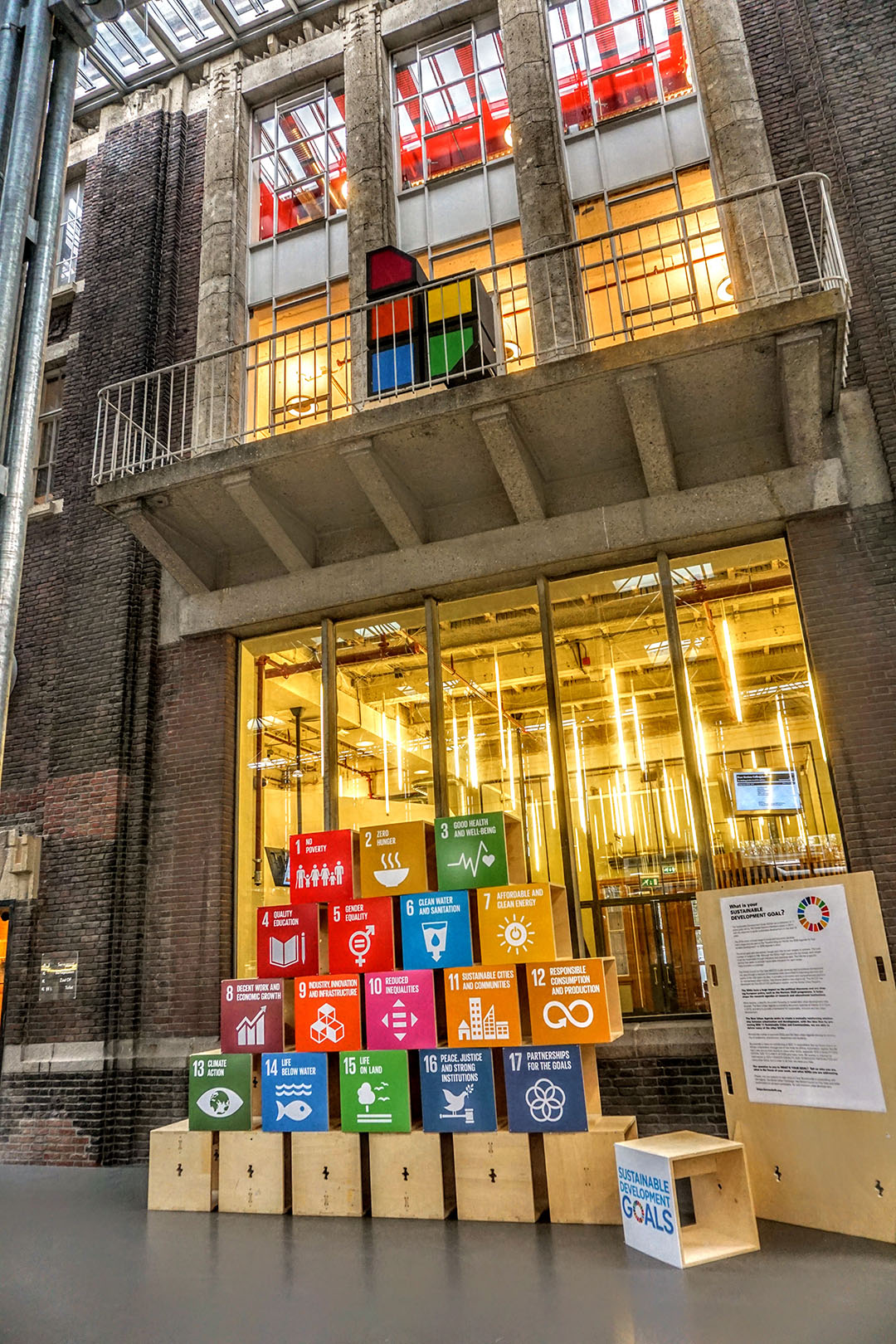All renewed BK bachelor courses relate to Sustainable Development Goals
The 17 Sustainable Development Goals (SDGs) were formulated by UNESCO to “secure a sustainable, peaceful, prosperous and equitable life on earth for everyone now and in the future.”1 Education is considered a key instrument of achieving these Goals. As such, UNESCO calls upon educational institutions to integrate the SDGs in their programmes. And our faculty is answering that call: all 24 courses in its bachelor’s programme are now connected to at least one SDG.
The most prevalent SDG in this new programme is SDG 11 (Sustainable Cities and Communities), followed by SDG 4 (Quality Education) and SDG 15 (Life on Land). In total, 14 of the 17 SDGs are linked to at least one course: a starting point for better integrating sustainability in the bachelor’s programme. The driving forces behind this project are: Leo van den Burg, the bachelor’s programme director; MaartenJan Hoekstra, director of education; Monika Roeling, expert on sustainable education; and Wing Yung, former Sustainability Coordinator.
What are the consequences of connecting courses with SDGs?
Monika: “Students are definitely going to notice that sustainability is now central to the programme.” The Brightspace pages of each course will clearly show which SDGs are involved, and all teachers are informed. Wing: “Their task is to make conscious choices about the themes and examples covered during the courses.”
That said, linking courses to SDGs is just the first step. MaartenJan: “We have not imposed the SDGs on anyone. Instead, they have served as inspiration during the development of each course.” Monika: “The labels are attached, the goals are set. Achieving them will require input from teachers, students, and Education and Student Affairs.” And Wing: “The real challenge is to keep the SDGs at the top of everyone's agenda during the academic year.” There will be a section on SDGs in course evaluations of both teachers and students.
How difficult is it to connect courses with SDGs?
In the previous bachelor’s programme, only 10 of the 24 courses were judged to connect to at least one SDG. Linking the new programme was done by the course coordinators. Monika: “We challenged them to first consider which SDGs could be applicable and then elaborate on the idea.” Wing experienced this collaboration as constructive: “For example, in the three ‘Society’ courses, social sustainability suddenly took centre stage in the coordinator’s presentations.”
MaartenJan: “In the end, all coordinators chose to work on integrating one or more SDGs into their courses.” Of course, some resistance might still arise when we start to monitor the implementation and open the discussion with the coordinators. Another complication is the high number of guest teachers employed by the faculty. It might prove difficult to keep all part-time staff up-to-date on the process of including SDGs in their courses.

How can other faculties follow this example?
One lesson is that a thoughtful top-down approach seems crucial to making education sustainable. Faculties should provide guidelines for the content of courses. MaartenJan: “Invite the educational staff to collaborate, inspire them! In our case, by presenting the SDGs as starting points.”
At the same time, this project is only feasible with bottom-up support. Monika: "We discovered a lot of enthusiasm and initiative: students and teachers trying a sustainable approach in class. But this often remains invisible to the rest of the organisation or to prospective students."
The team recommends creating a clear overview of the entire bachelor programme. Everyone should see which sustainability topics are covered and at what point. Wing: “Students need to know what to expect and where to go if they are interested in a specific SDG.”
Finally, the overall conclusion of the team is that any method of integrating SDGs in education could work. MaartenJan: “There are so many options, but we started small, merely by asking the question: how would you incorporate this topic?” They emphasize that change starts only after choosing a method and going with it. “Our advice is to break the stalemate. Choose any way of implementing sustainability, and start as soon as possible.”
More information
1Source: Education for Sustainable Development Goals: learning objectives.
Images made by and owned by Roberto Rocco.
Read the team’s paper about integrating the environment and sustainability in current university architecture courses.
Read more about ‘Sustainability in Education’ on the website of Sustainability Team TU Delft .
